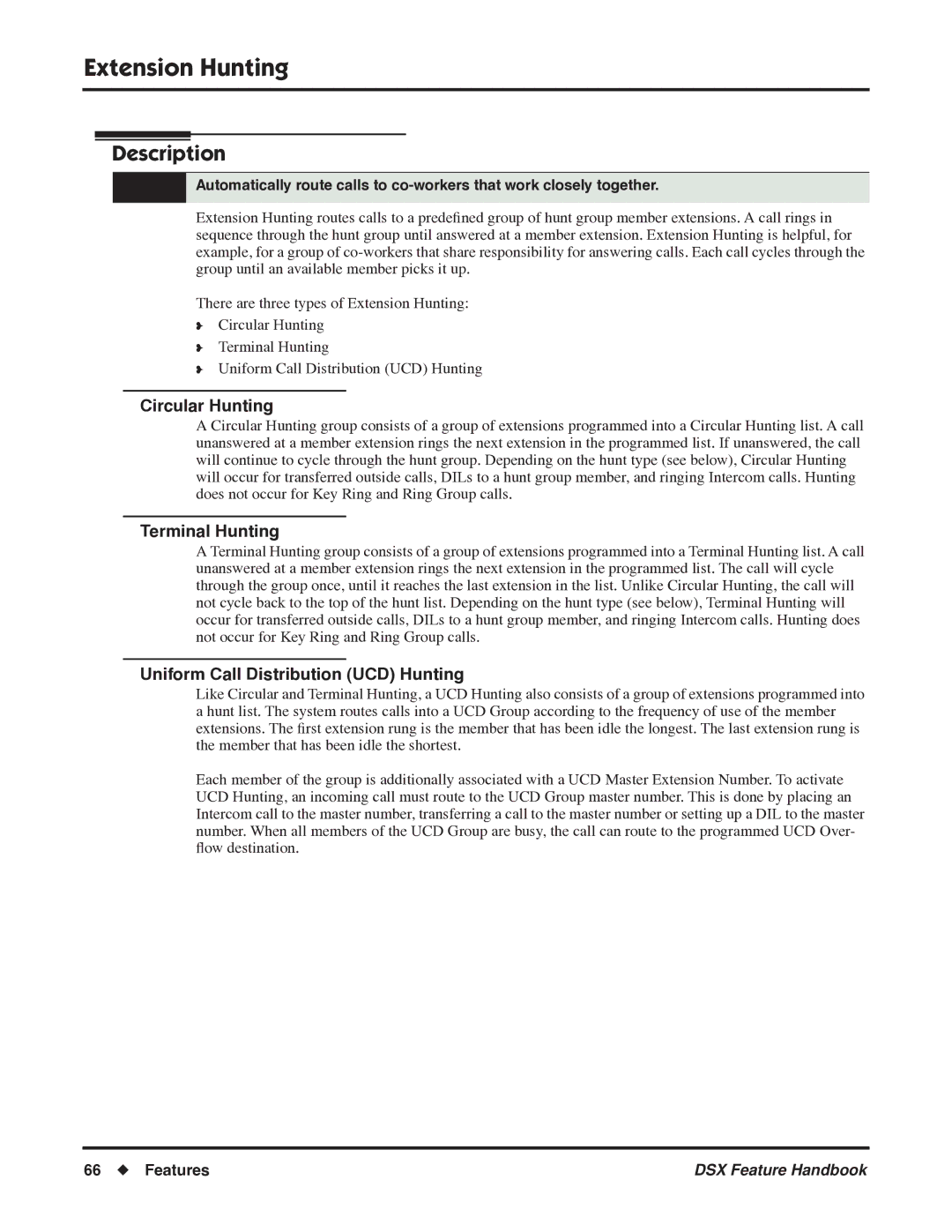
Extension Hunting
Extension Hunting
Description
Automatically route calls to
Extension Hunting routes calls to a predefined group of hunt group member extensions. A call rings in sequence through the hunt group until answered at a member extension. Extension Hunting is helpful, for example, for a group of
There are three types of Extension Hunting:
❥Circular Hunting
❥Terminal Hunting
❥Uniform Call Distribution (UCD) Hunting
Circular Hunting
A Circular Hunting group consists of a group of extensions programmed into a Circular Hunting list. A call unanswered at a member extension rings the next extension in the programmed list. If unanswered, the call will continue to cycle through the hunt group. Depending on the hunt type (see below), Circular Hunting will occur for transferred outside calls, DILs to a hunt group member, and ringing Intercom calls. Hunting does not occur for Key Ring and Ring Group calls.
Terminal Hunting
A Terminal Hunting group consists of a group of extensions programmed into a Terminal Hunting list. A call unanswered at a member extension rings the next extension in the programmed list. The call will cycle through the group once, until it reaches the last extension in the list. Unlike Circular Hunting, the call will not cycle back to the top of the hunt list. Depending on the hunt type (see below), Terminal Hunting will occur for transferred outside calls, DILs to a hunt group member, and ringing Intercom calls. Hunting does not occur for Key Ring and Ring Group calls.
Uniform Call Distribution (UCD) Hunting
Like Circular and Terminal Hunting, a UCD Hunting also consists of a group of extensions programmed into a hunt list. The system routes calls into a UCD Group according to the frequency of use of the member extensions. The first extension rung is the member that has been idle the longest. The last extension rung is the member that has been idle the shortest.
Each member of the group is additionally associated with a UCD Master Extension Number. To activate UCD Hunting, an incoming call must route to the UCD Group master number. This is done by placing an Intercom call to the master number, transferring a call to the master number or setting up a DIL to the master number. When all members of the UCD Group are busy, the call can route to the programmed UCD Over- flow destination.
66 ◆ Features | DSX Feature Handbook |
